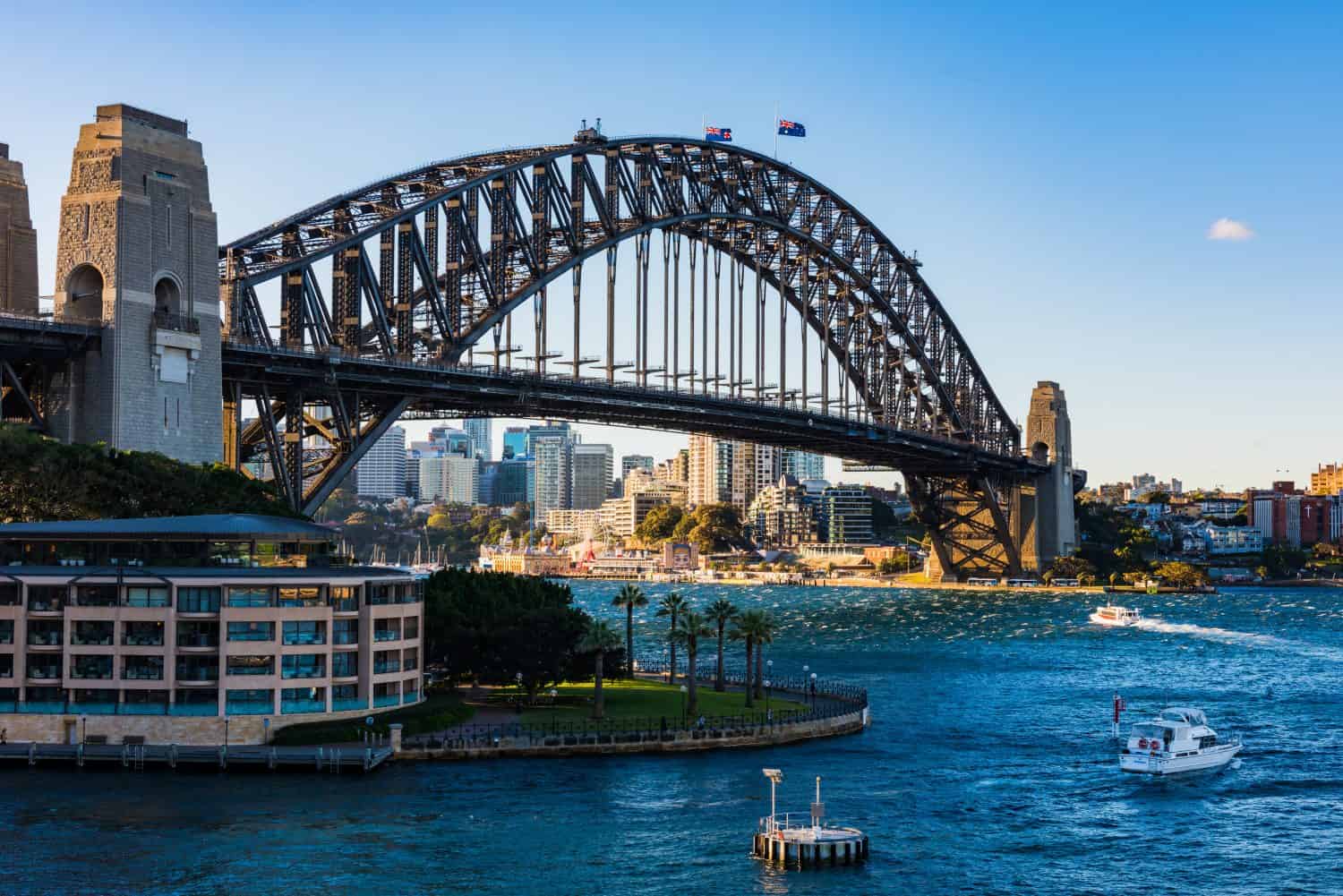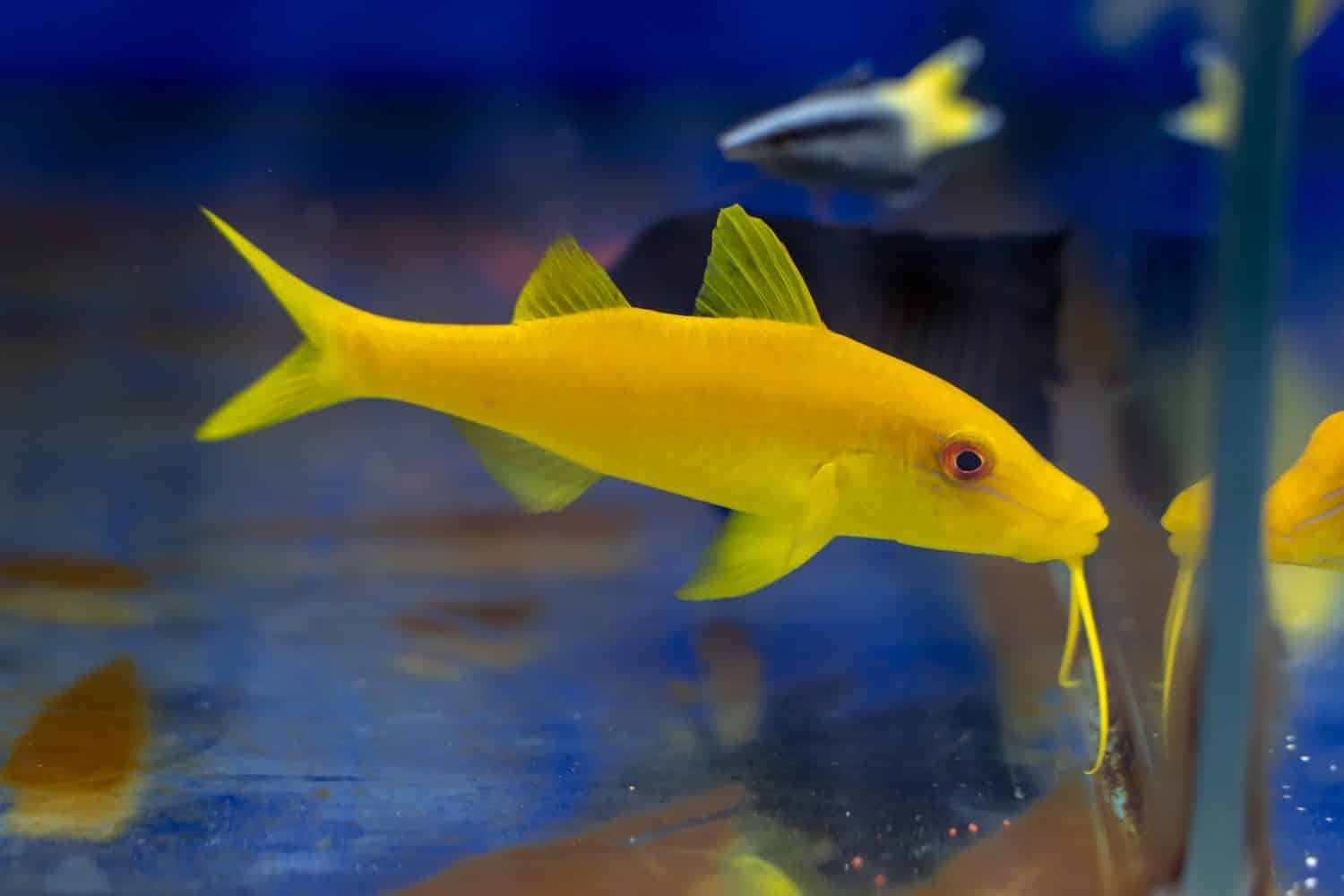As one of the top ten longest steel arch bridges in the world, the Sydney Harbour Bridge is an iconic landmark of Sydney, New South Wales. Affectionately nicknamed the “Coathanger” because of its arched base, this incredible bridge offers six lanes of road traffic, two railway tracks, and even a pedestrian footpath. The Sydney Harbour Bridge is also the highest in New South Wales, at dizzily 440 feet tall.
The Highest Bridge in New South Wales

The Sydney Opera House is visible from the Sydney Harbour Bridge.
©Hans Wagemaker/Shutterstock.com
Spanning from the central business district to the North Shore, this bridge crosses over the Sydney Harbour. The Sydney Harbour Bridge is 1,149 meters (3,770 feet) long and 48.8 meters (160 feet) wide. It is also 134 meters (440 feet) tall, about ten feet shorter than the Great Pyramid of Giza.
The Sydney Harbour Bridge is a through-type arch bridge, which is characterized by the upper deck sitting at the spring line of the arch. In this way, the deck is within the arch, and cables that are in tension suspend the center part of the deck from the arch.
Location of the Highest Bridge in New South Wales
The Sydney Harbour Bridge is in Sydney, New South Wales, Australia. Specifically, it starts in Dawes Point, a suburb of Sydney on the northwestern edge of the central business district. It ends in Milsons Point, a suburb on the lower North Shore of Sydney.
It carries the Bradfield Highway, Cahill Expressway, North Shore railway line, a footpath, and a cycleway. Also, travelers of the Sydney Harbour Bridge have a great view of the Sydney Opera House as they cross the Sydney Harbour.
Here is where you may locate the Sydney Harbour Bridge on a map.
History of the Sydney Harbour Bridge

The total cost of the Sydney Harbour Bridge came to AU£6.25 million, the payment wasn’t complete until 1988.
©Taras Vyshnya/Shutterstock.com
Dorman Long & Co, a UK steel producer located in Middlesbrough, built the Sydney Harbour Bridge. The company hired Sir Ralph Freeman to design and perform detailed work on the bridge. John Bradfield, an Australian engineer of the New South Wales Department of Public Works, oversaw operations throughout the eight years it took to complete the project. Bradfield originally submitted a design plan, which was a rough copy of Hell Gate Bridge in New York, but Dorman Long never used the plan nor consulted Bradfield on their design. Despite this, Bradfield still wanted credit for the design of the Sydney Harbour Bridge. Many authorities supported Freeman as the true designer of the bridge, but the controversy continues to this day, though some scholars say Bradfield was the mastermind behind it all.
The bridge opened on March 19, 1932. At the opening ceremony, the Premier of New South Wales, Jack Lang, was in charge of the ribbon cutting. However, just before Lang cut the ribbon, a man on horseback rode in and slashed the ribbon in half with a sword. The horseman declared the Sydney Harbour Bridge open in the name of New South Wales. Police immediately arrested the man, and Lang hastily retied the ribbon. Finally, Lang cut the ribbon and officially opened the bridge.
The total price for the highest bridge in New South Wales was AU£6.25 million, which was paid off in 1988. Construction of the Sydney Harbour Bridge wasn’t without its troubles either, as 16 people died during its construction. In addition, 500 families’ homes were demolished to make way for the bridge.
Animals That Live By the Sydney Harbour Bridge
Thanks to its location in the Sydney Harbour, you can find many types of fish, birds, and mammals around the Sydney Harbour Bridge. Some animals you may find are:
Rainbow Lorikeets

A rainbow lorikeet’s tongue functions almost like a brush. The tongue gathers bits of pollen and drops of nectar.
©whitejellybeans/Shutterstock.com
This medium-sized parrot is hard to miss. A very bright bird, rainbow lorikeets have deep blue heads with greenish-yellow nuchal collars. With an orange or yellow colored chest, the back and tail are a vivid green hue. The belly of this bird is deep blue, and the top of the wings are green with contrasting red underwings. These lorikeets are aptly named “rainbow.”
Between 2.6 and 5.5 ounces in weight, rainbow lorikeets mostly eat fruit, pollen, and nectar. Their tongues are designed especially with a papillate appendage, perfect for extracting pollen and nectar from flowers.
Goatfish

Some kinds of goatfish can change their colors.
©chonlasub woravichan/Shutterstock.com
A striking fish you may spot in the Sydney Harbour, goatfish are usually red or yellow in color. However, some species of goatfish can change their colors. In general, their bodies are elongated with forked tails and widely separated dorsal fins.
Most notable about their appearance is their two chin barbels, which makes it look like they’re sporting goatees. The barbels have chemosensory organs which enable them to find food hidden in the sand or reef crevices.
Bottlenose Dolphin

On average, bottlenose dolphins live for fifty years.
©Tory Kallman/Shutterstock.com
A favorite among aquatic mammals, you may also notice bottlenose dolphins splashing beneath the highest bridge in New South Wales. These dolphins have astounding hearing, and experts believe that sound travels through the bottlenose dolphin’s lower jaw, which then goes up to its inner ear. From there, the signals transmit to the brain for interpretation.
Bottlenose dolphins range from six to 12 feet long and can be anywhere from 330 pounds to 442 pounds in size. They also shed their outer layer of skin every two hours!
The photo featured at the top of this post is © Hans Wagemaker/Shutterstock.com
Thank you for reading! Have some feedback for us? Contact the AZ Animals editorial team.






